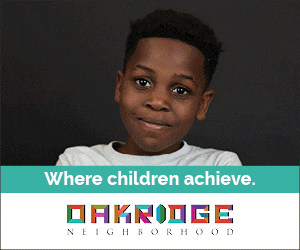For 50 years, apes have been Rumbaugh’s passion
Iowa native Duane Rumbaugh started college with the intention of becoming a biologist. But a high-profile crime opened his eyes to the world of clinical psychology. Once he “got over that,” which he said happens to a lot of students who go down that path, he became interested in comparative psychology. His first job out of college was teaching at San Diego State College. Rumbaugh started focusing his comparative studies on primates at the nearby San Diego Zoo, and since then, his research into primate learning has garnered worldwide attention. He spent the bulk of his career at Georgia State University, where he founded its Language and Research Center. Two years ago, he moved back to Iowa to join the Great Ape Trust as its lead scientist emeritus.
Why did you decide to study psychology?
I had planned to become a biologist. But while I was studying at the University of Dubuque, there was the infamous Bednasek murder trial in 1949 of (Robert) Bednasek, who killed his woman friend. There was a clinical psychologist at the University of Iowa who was quoted frequently in the paper about what he made of the Bednasek case. I found it very interesting, and in fact, I went down to the U of I my senior year and studied with him for one semester.
How did you choose a focus on comparative psychology?
Everybody getting interested in psychology wants to become a clinical psychologist. But then they get over that. I did in my first year of graduate school at Kent State University. I became disenchanted with it and turned my attention to general experimental psychology and learning theory. I studied comparative psychology at the time as part of that program.
How did your work with primates begin?
I started working at San Diego State College after finishing my doctorate at the University of Colorado. The city was the ideal spot for the kind of comparative psychology that I developed because the San Diego Zoo was there and they had a marvelous collection of primates.
What was the basis of your research back then?
What my research found is that the larger the primate, the larger the brain and the more intelligent they are in that they can take a very small amount of knowledge and use it to leverage an advantage in new situations. The little guys can’t do that.
When did you start to see that primates could communicate with humans?
In 1968, I got offered a position at the Yerkes Regional Primate Center at Emory University in Atlanta. At first, I didn’t think that apes had any language capability whatsoever, but the director of the center pressed me very hard to do something on it and I conformed. I started the Lana Chimpanzee Language Project in 1971 and it ended up being a marvelous success. We developed a computer-monitored keyboard that Lana used to communicate with us. We found that she could devise novel sentences using the symbol keys. That study has been perpetuated for 35 years and it has really proven to be a development basic to the natural foundation of the Great Ape Trust of Iowa.
What brought you to the Great Ape Trust of Iowa?
I had known Ted (Townsend, the project’s founder) for about eight or nine years, and I wanted very much to be a part of this project. He hired me to be part of it and I moved back here from Atlanta.
What are your responsibilities here?
I look to develop educational programs with institutions and help educate the public about what we are.
Do you think there was a misconception early on that this would be like a zoo?
Perhaps there was. But with the apes in particular, it is so important that the people who come here learn to understand and appreciate them rather then to take a passing look at them and walk on to the next exhibit.
The Great Ape Trust started offering public tours this summer. How have those been received?
We’ve had a fantastic response, and we may end up extending the tour dates beyond September because of our long waiting list.
Why is it so important for the public to understand what goes on here?
We are educators and we want people to know what we’ve learned. There is a very close genetic relationship between the great apes and us, genetically, behaviorally, cognitively, and they need to be conserved, studied and understood. And we are looking for supporters to help us in our mission of building more facilities for the apes and for education.
What drives your passion for your work?
To me, I don’t really go to work. Work is my life. My life is my work, and that’s a wonderful kind of state to have. I’m something like a farmer who loves the land, except I’m a professor who loves his discipline. Primates have been my love for 50 years, and it’s much more rewarding and fun to think, write and talk about them than to do just about anything else I can think of. The great apes were not threatened 50 years ago when I started my studies. Now they have become endangered, and we’re going to lose them in the forests of the world within the next 10 to 30 years. It’s a terrible travesty, and I believe that in my heart that we prove to be such bunglers of natural resource management, that if we lose them, then we’re not far behind.
-Sharon Baltes








